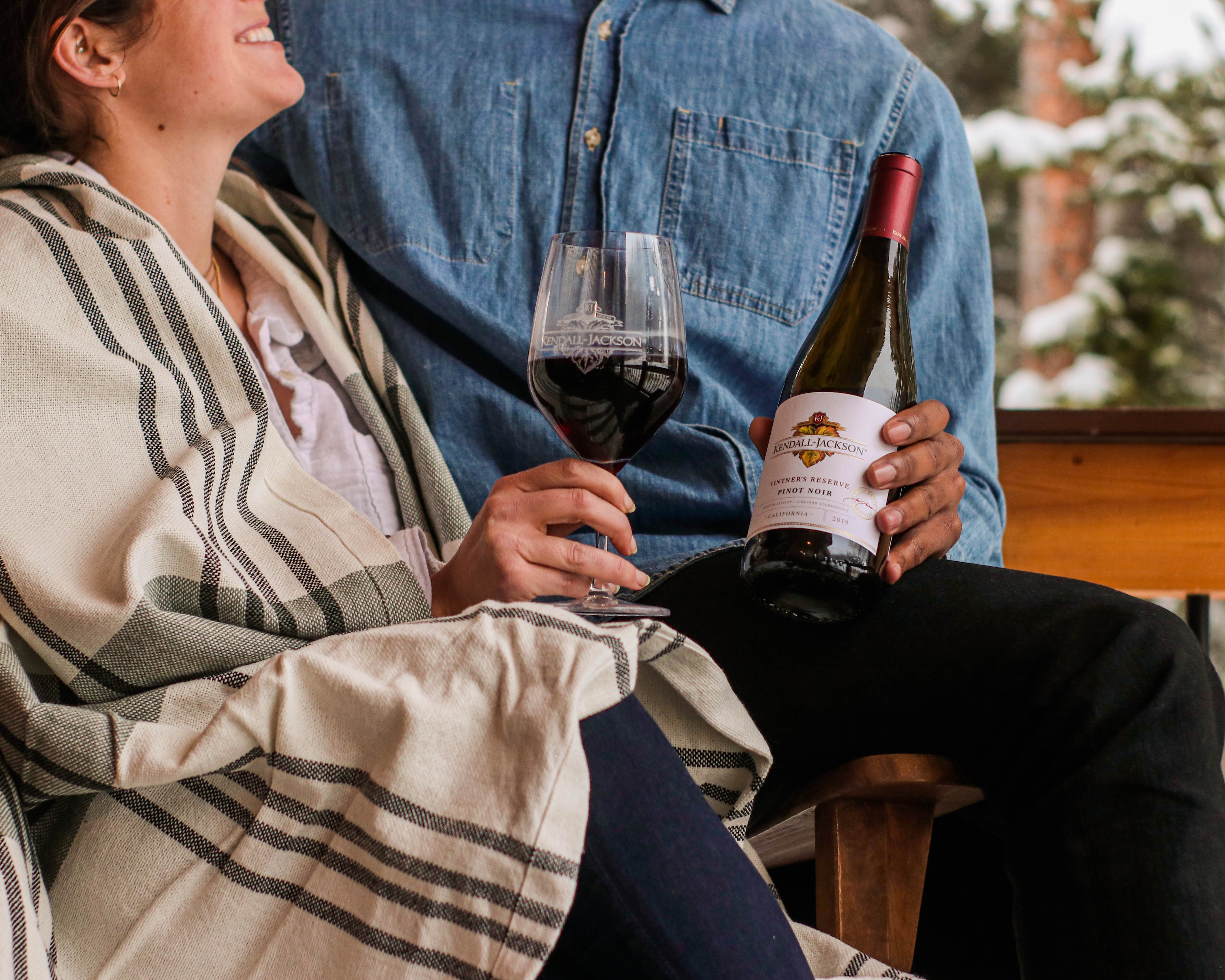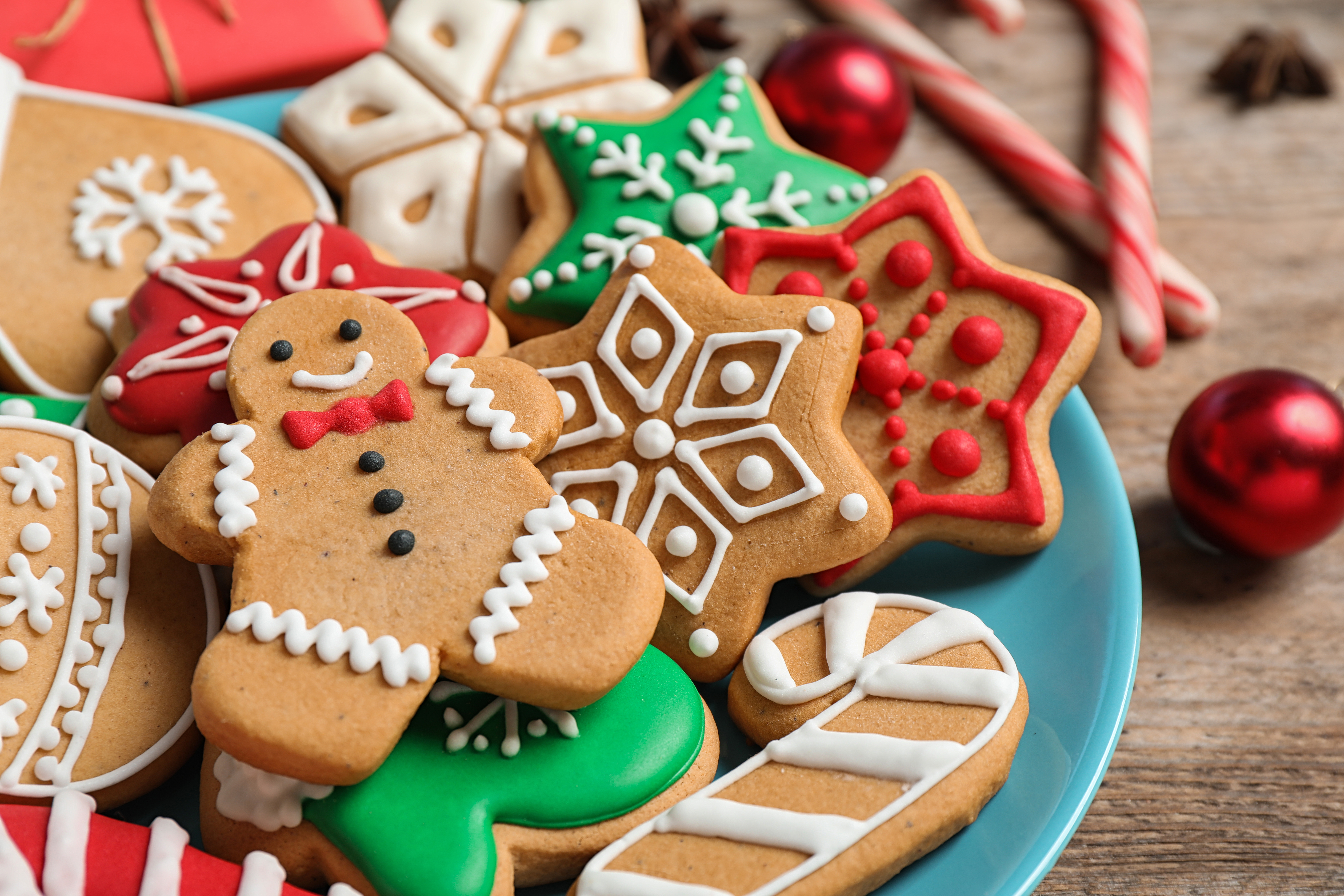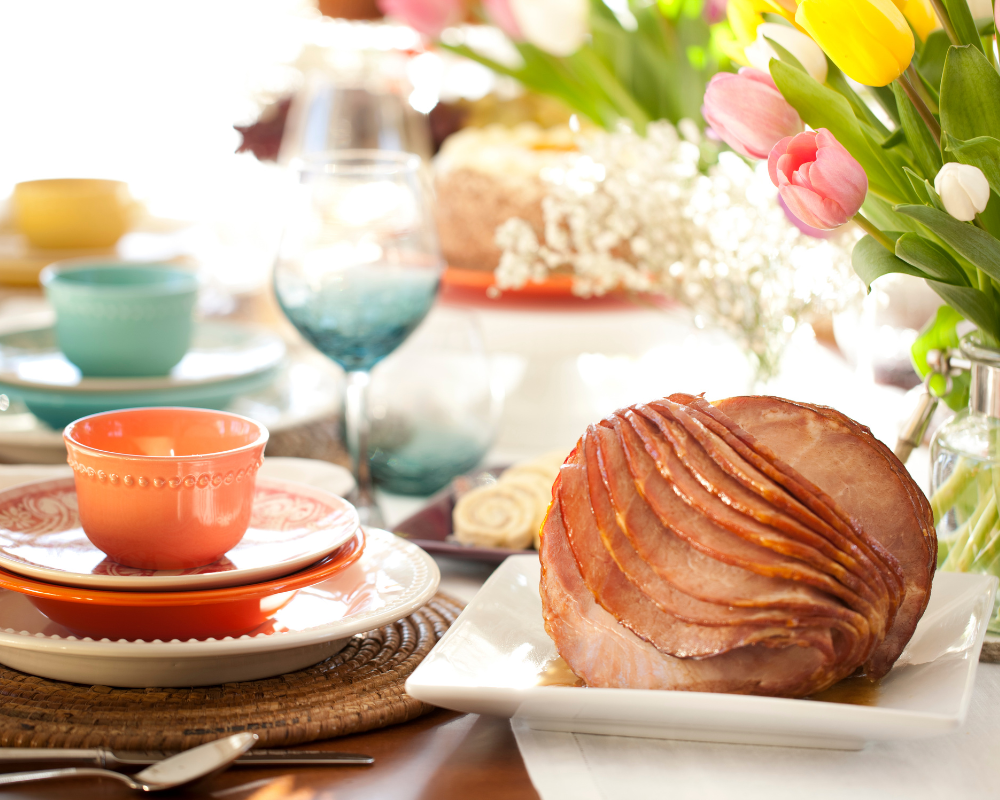8 Steps for Hosting a Blind Wine Tasting Party
This blog was updated in December 2024.
Blind wine tasting has the aura of an urban legend and is a spectacle of esoterica in some indie movies on wine. Tiptop wine pros absolutely can deduce wines’ grape varieties, provenances, vintages and – sometimes – vineyards and producers. It’s not just a parlor trick, but, even on a good day, blind tasting is very humbling.
If you’re curious about how to do a wine tasting at home, you’re in the right place! This guide will walk you through everything you need to know to create an unforgettable experience for you and your friends. Whether you’re a seasoned enthusiast or just starting out, hosting a blind tasting can be a fun and educational adventure.
What is a Blind Wine Tasting?
Have you ever wondered how the pros do it? How about conducting your own blind – or “deductive” – tasting? The tastings are dubbed “blind” because the tasters don’t know what the wines are. They can also be called “deductive” as the tasters have to work out what the wines are from what they taste in the glass and - possibly - what they know about a set of wines.
Blind wine tasting is particularly hard when the wines are “double blind”. This means the tasters know absolutely nothing about them – other than that they can see the wines are white, red, sparkling and such. Mind you, there is a more torturous version of this exercise, in which wines can be placed in a black tasting glass. Sometimes in these glasses lighter reds can seem like richer whites and vice versa.
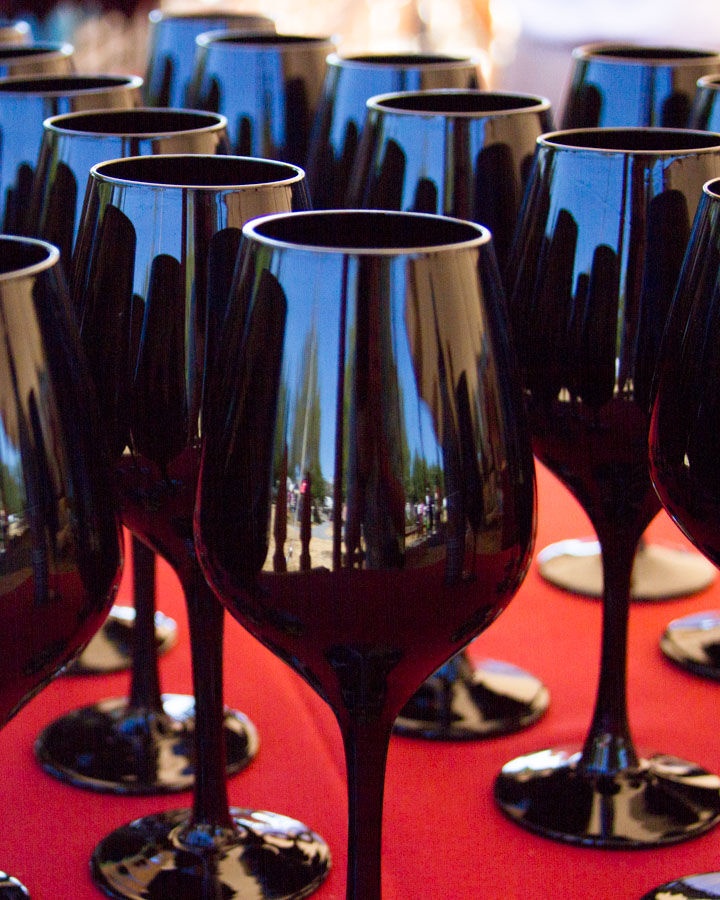
However, these wine tastings can have a focus, such as “Pinot Noir from Around the World” or “Sauvignon Blanc from the New World.” (NB: The “New World” is all wine regions outside of Europe and the Caucasus Mountains, where winemaking began.) Such blind wine tastings can be termed “single blind”.
Sometimes wines are very typical, or “show typicity”, of a grape variety or region. Those are the easy ones to identify. Tasting them is like recognizing a song just by hearing its first few strains. Figuring out the harder ones can be more like playing a game of Clue. It is a woman, but isn’t Miss Scarlet. Is it Mrs. Peacock or Mrs. White?
Feeling up for the challenge to host a blind wine tasting party? Terrific!
How to Conduct a Blind Wine Tasting Party
Having a fun blind wine tasting party is the most important thing! Each of these guidelines can be taken to heart or glossed over, depending on the desired style of your deductive wine tasting party.
Step 1: Pick a Theme
Single blind tastings give participants the best chances of enjoying themselves as they have some frame of reference. You can create your own blind wine tasting line-up based on what you’re interested in learning. There’s no need to search around for a blind wine tasting kit.
In addition to those mentioned above, here are some ideas for your wine tasting flight:
“Major Red Wine Grape Varieties from the USA”:
- Cabernet Sauvignon
- Merlot
- Zinfandel
- Pinot Noir
“Famous Red Wines from Around the World”:
- Sonoma Pinot Noir
- Red Bordeaux
- Chianti Classico
- Argentinian Malbec
“White Wines From France”:
- White Burgundy
- Sancerre
- Alsace, Riesling
- White Bordeaux
“Globe-Trotting with Pinot Gris”:
- California, USA
- Alsace, France
- Veneto, Italy
- Marlborough, New Zealand
Step 2: Selecting the Wines
Choosing the right wines for your blind tasting is crucial to create an enjoyable and educational experience. Here’s how to make those selections count:
Number of Wines
Aim for 4 to 6 wines in your lineup. This range keeps things engaging without overwhelming your guests. Each wine should offer something unique, encouraging discussion and exploration.
Diversity of Choices
- Varietals: Consider including a variety of grape types to keep the tasting dynamic. Think of classics like Cabernet Sauvignon, Pinot Noir, Chardonnay, and maybe even an intriguing Petite Sirah for an unexpected twist.
- Regions: Highlight wines from different regions to showcase various terroirs. For instance, you might pair a Sonoma Cabernet with a Bordeaux.
- Price Points: Mixing wines at different price ranges can provide insight into how quality varies with cost, adding another layer to your tasting adventure.
Accessibility
Make sure the wines you select are accessible. Guests should be able to find them at local shops or online without much hassle, making it easier for them to explore more in the future. Looking for a simple and convenient wine delivery option? Shop our full selection of Kendall-Jackson wines and easily purchase quality wines from the comfort of your home.
Choosing the right wines isn’t just about taste; it’s about creating a memorable experience that invites conversation, learning, and, most importantly, fun!
Step 3: Consider Your Blind Wine Tasting Environment
Light
A deductive tasting doesn’t need to transpire in a lab-like setting with eye-stingingly bright lights while you and your friends peer into wines over a white table. However, it is definitely harder to observe wines in the amber mood lighting of a fireplace. Consider that a reasonable amount of light to see the wines’ color differences will help, especially with reds. It also helps to look at the wines against a white tablecloth or tasting mat. (A tasting mat can be as simple as a piece of 8.5” x 11” printer paper!) Either of these can also help protect your table from spills.
Space
Speaking of spills, those are more likely to happen while crowded around a coffee table or gathering several glasses on a side table. Giving everyone enough room for their glasses, elbows, a spittoon (especially if your guests are driving) and maybe even a piece of paper for note-taking is a good way to reduce your chances of sprinting mid-tasting for the Wine Away, kosher salt or whatever your preferred wine removal trick may require.
Smell
Planning on feeding your guests and enjoying the remnants of your wines once you finish the blind tasting game? That hearty winter stew simmering on your open kitchen’s stove or the smoky tones emanating from your Weber Grill or Big Green Egg can be very distracting to wine sniffers. That reminds me: thinking of tasting outside? Woe betide the allergy suffers in the spring and summer.
Step 4: Serve Wines at Their Proper Temperatures
Following on the idea of tasting outside or by a roaring fireplace, if your tasting environment turns out to be a sweltering, it might be hard to keep the wines from becoming too warm. However, a little advance preparation is all you need to make sure the wines “show well”, or in their best light, to help blind wine tasters identify and enjoy them. Here’s a quick guide on how to serve your wines at the right temperature.
Proper wine service temperatures are around 50° F for light whites and pale rosés, 55-60° F for richer whites and darker rosés and 60-65° F for reds. Keep in mind that wines warm up once out of the fridge or ice bucket, and especially once they are in a tasting glass surrounded by the ambient air temperature.
Step 5: Give Your Blind Wine Tasters the Same Wine Glasses
If you have enough glassware available, it is ideal for everyone to taste all of the wines at once. This way participants at your blind wine tasting party can compare and contrast the wines.
Is this sounding like too many glasses to wash post-party? How about these clear, stemless and disposable glasses? They are the perfect size for a tasting portion of wine, and you can taste them in the recycling bin when the party is over. (By the way, I’ve tried washing these in the top rack of a dishwasher. They shrivel. If you want to reuse them, you’ll have to hand wash them.)
And yes, size matters! If you’re pouring wine “tastes” – meaning only an ounce or two – for the blind tasting game, consider how big the glasses are. Those enormous, restaurant-style glasses are fantastic for dinner. However, some of them can hold almost a whole bottle, which is 25.4 ounces! It can be very hard to smell wine “tastes” in these. (Separately but importantly, the size of your wine pour will determine the number of bottles you’ll need. I usually pour two ounces, so I need one bottle for every twelve guests.)
When possible, everyone should taste from the same style of wine glass. Put the same Pinot Grigio in three different glasses side-by-side, and the wine will likely “behave”, or smell, differently in each glass.
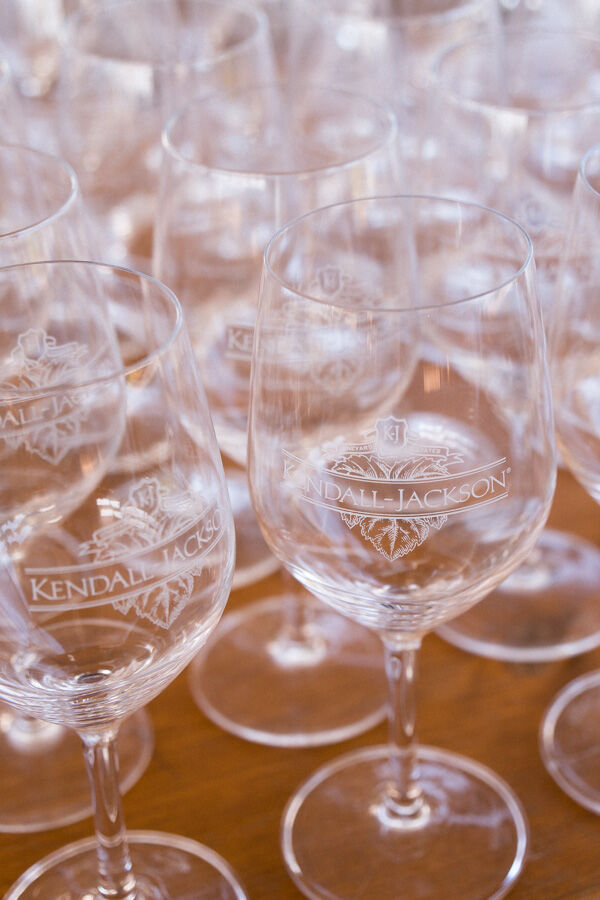
Über geek alert (skip this if you’re not into minutiae!): If you have to mix and match glasses across participants, try to make sure that the same wines are served in the same glasses. So if there are three white wines, everyone would have the same type of glass for each different white wine. That is to say that the Riesling could be served in a different glass than the Sauvignon Blanc, and the Chardonnay would be served in a third type of glass. Here’s one catch: while different glasses work well enough across different grape varieties, if you have a varietal flight (that is, a flight of the same variety, like the K-J AVANT, Vintner’s Reserve and Grand Reserve Chardonnays), the wines will be most fairly assessed if they are all in the same glass.
Step 6: Establish in Advance What Constitutes a Correct Wine Identification
Did someone say that Cabernet Sauvignon was from Napa Valley but it was from Alexander Valley? A correct ID can depend on the context of the wines, especially on a Saturday night among friends. Were the scope Cabernet from around the world, I’d say someone pretty much nailed it. However, if your blind wine tasting party is focused on Cabernet Sauvignon from California, the answer would need to be as precise as possible.
Here’s my pro tip: hedge by going big to small with your guesses. For example, if you nailed the origin of the Jackson Estate Hawkeye Mountain Cabernet Sauvignon, you could guess this way: USA, California, North Coast, Sonoma, Alexander Valley.
Step 7: Don’t Inadvertently Provide Clues
It’s easy to accidentally leave the corks in a kitchen corner where someone might (oops!) see them when washing up their hands before the tasting, and of course, there are always sneaky peeps! Be sure to hide the wine labels (the easiest way is to wrap the bottles in aluminum foil), neck foils (these can be cut off when plastic or tin or taped up with a dark tape like duct tape on screwcap bottles) and corks or capsules (but keep them to store wine if any is left over!)
Also, if you taste different grape varieties across the wine tasting flight, different bottle shapes can suggest which wines are which. For example, Rieslings typically come in flute-shaped bottles, Pinot Noirs in slope-shouldered “Burgundy bottles” and Cabernet Sauvignons in high-shouldered “Bordeaux bottles”. You can always place the bottles in mylar bags (they hide the bottle shapes better than brown paper bags) closed at the neck with rubber bands. If the face of intense rivalries, pour the wines yourself. Some folks grope!
Step 8: Make the Party Merrier with Nibbles
Food is always welcome – and a good idea – when people are tasting wine. Besides, it’s a wine tasting party! Strong flavors and food odors disrupt keen wine acumen, so save those edibles for after the tasting game.
Stick to blander nibbles until you reveal the wines! Carr’s Table Water Original Crackers are classic accompaniments to wine tastings, but I prefer slivers of plain (not sour dough or whole wheat) baguette. Some wine pros prefer celery sticks for their neutrality and refreshment. Light cheeses (many semi-soft cheeses like brie tend to be fairly neutral) or hummus can nicely accompany any of these. Finally, water is a terrific palate cleanser and helps keep dehydration at bay.
Preparing for Your Red, White or Rosé or Blind Wine Tasting
Want to get “fit”, or “fabulous in tasting”, for your blind wine tasting party? Here are a few flavor and palate texture clues for the world’s major red and white grape varieties, including some flavors derived from their winemaking and aging. They are followed by some ways to identify wine origins and vintages.
Wine Grapes
- Blackcurrant, bell pepper, toast. Full-bodied and often high in alcohol with zippy tannins and mouthwatering acidity for structure.
- Plum, black cherry, milk chocolate. Plump mid-palate, easy tannins and full body.
- Cherry, strawberry, rose, earth. Smooth tannins and full of refreshment.
- Boysenberry, blackberry jam, sweet spice. Modest in mouth-drying tannin but frequently pronounced – though balanced – in alcohol.
- Blueberry, black pepper, black olive, wild game. Firm tannins and brisk acidity offering lots of palate structure.
- Citrus blends, golden apple, butter, toast. Medium to full-bodied, often with mild acidity.
- Gooseberry, guava, grass, cat’s pee. Scintillating in refreshment and ranging from light to medium in body.
Pinot Gris/Pinot Grigio
- Green apple, honey, blanched almond, starched linen. A switch-hitter than can be light or weighty on the palate and dry or lightly sweet.
- Peach, lime, wet riverbed, petrol. Zingy acidity. May be bone dry or sumptuously sweet.
Origin
Old/New World
- Old World wines (from Europe and the Caucasus) show more mineral tones – smells of granite, slate, wet riverbed and the like – as well as other non-fruit aromas like earth and hay. New World wines tend to taste exuberantly fruit-driven.
Warm/Cool Climate
- In extreme winegrowing regions, climate can trump origin. Warmer climate wines show oodles of fruit and tend to feel thicker and oilier on the palate. Cooler climate wines are leaner in fruit and tighter in body and tend to have more zesty refreshment.
Vintages
It takes lots of time, money and focused tastings to get older vintages right. But here are two clues that will serve you well for identifying younger wines:
- Color
Whites gain color, turning darker and becoming more golden. Reds lose color, edging away from red, purple and black tones toward copper and brown ones.
- Fruit Character
Is the wine showing fresh fruit flavors, making it a younger wine, or “tertiary” (aged) flavors, like fallen leaves, mushrooms and earth?
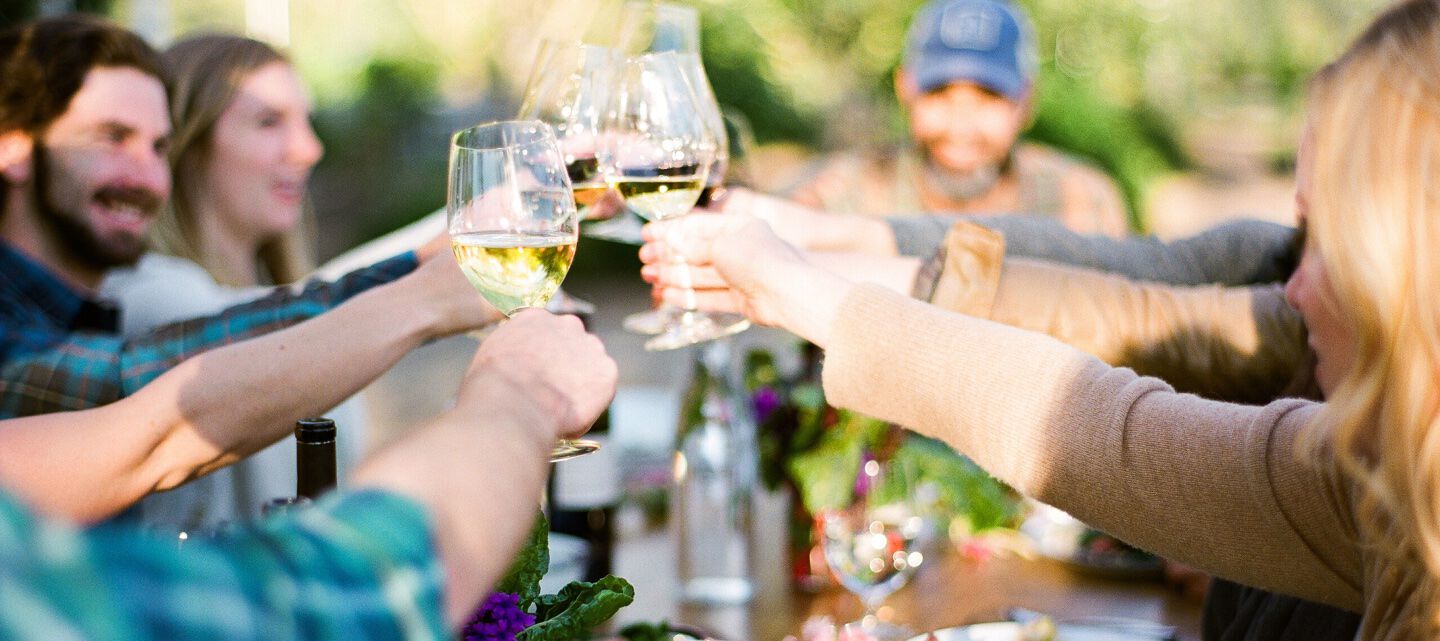
Cheers to Hosting the Best Wine Tastings
Here’s wishing you much fun and learning at your blind wine tasting party!
Just two last tips: 1) the less you taste, the better your accuracy will be; 2) trust your instincts – your first guess tends to be the best!
For more wine education content, head over to our entertaining page.
Christy Canterbury is a Master of Wine, journalist, speaker and judge based in New York City. In 2014, she was short-listed for the Roederer Online Wine Communicator of the Year Award. Her work has been published in Decanter, Wine Enthusiast, Edible Green Mountains, Wine Searcher, Food Arts, Snooth, Beverage Media, TimAtkin.com, Civiltà del Bere, Wine Business Monthly, TASTED, Selectus Wines and in other outlets.

